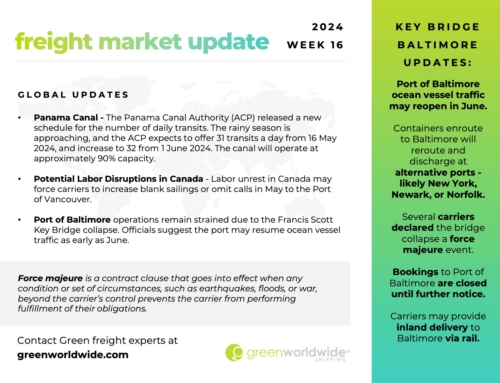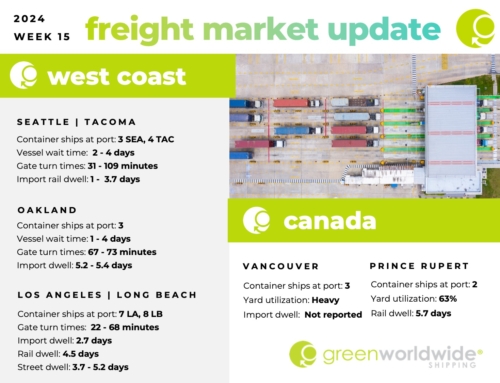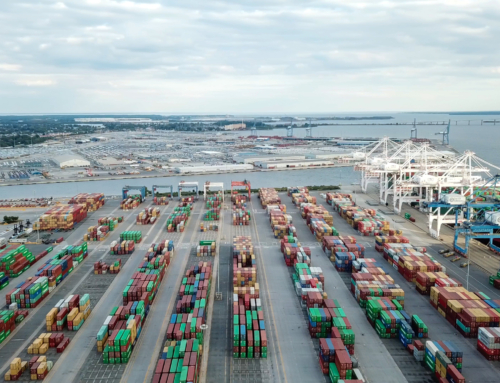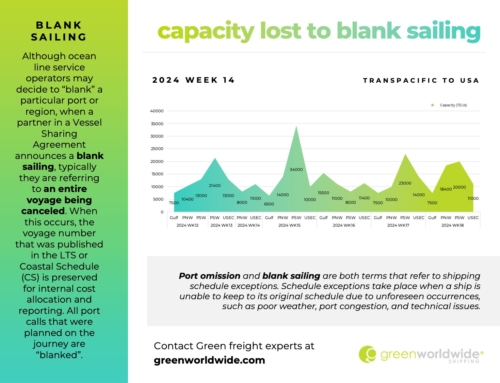PER CBP CSMS# 18-000526 VESSEL DIVERSION PROCEDURE FOR HURRICANE FLORENCE
A hurricane warning is in effect for the Carolinas, Virginia and Maryland. U.S. Customs and Border Protection (CBP) ports of entry (POE) within these areas may receive requests for vessel diversions as a result of pending weather conditions. In anticipation that vessels or cargo will be diverting to other U.S. ports, CBP is issuing guidance for port operations.
A vessel granted a permit to proceed from one port in the U.S. to another port or a vessel cleared to a foreign port or place, while en route, may divert to a port in the United States other than the one specified in the permit to proceed during this emergency event.
The owner or agent of the vessel shall immediately give notice of the diversion to the port that granted the permit or clearance, identifying the new destination of the vessel. In this instance, ports should allow for electronic/telephonic Reports of Diversion by the vessel’s owner/operator or agent. The originating port should log the date/time notifications are received and advise the owner or agent of the vessel to note on the CBP Form 3171, provided to the alternative port, its request for diversion and the specific situation for the diversion.
Every effort should be made to provide notice to the intended port of arrival, prior to the vessel reaching the port for which it is being diverted. However, due to extenuating circumstances, vessels may not be able to provide timely notifications. Ports are encouraged, on a case-by-case basis to review all request and allow leniency for those vessels unable to submit timely notifications.
On arrival at the new destination, the master shall immediately report arrival. The master shall also make entry within 48 hours. If necessary, the Port Director may grant permission to transship all cargo and passengers from one vessel in the U.S. to another vessel under Customs supervision. If a vessel is transporting residue cargo, or is on an outward foreign voyage, or a voyage to noncontiguous territory of the U.S., the procedures prescribed in §4.85, §4.87, or §4.88 must be followed.
A vessel may unlade cargo or baggage at an alternative POE if the Port Director of that port issues a permit for the unlading of cargo or baggage or a result of an emergency existing at the port of original destination.
Cargo and baggage unladen at the alternative port should be entered in the same manner as other imported cargo or baggage; treated as unclaimed and stored at the risk and expense of its owner; or re-laden upon the same vessel without entry, for transportation to its original destination.
The Port Director will make a case-by-case determination for the carriers that will be allowed to discharge:
- The carrier must have transmitted cargo information to CBP via the Automated Commercial Environment (ACE) reflecting the actual U.S. port of unlading (diversion port);
- CBP officers have had the opportunity to screen the cargo and none of the shipments are determined to be of such high risk that discharge would not be authorized; and
- The requests for diversion was submitted electronically or telephonic to the original port of unlading and via a CBP Form 3171to the alternative port of unlading and has been approved by the Port Director.
- After entry, the Cargo Declaration, Customs Form 1302, must be amended to reflect the alternative port of unlading.
The following procedures should be provided for ACE Cargo Release:
If a POE is provided on the entry by the filer:
- Filer may update the initially submitted POE on the entry or remove it from the transaction if the bill of lading has not yet been arrived.
- If filer doesn’t update the POE as noted above, and if the original bill destined for Port A truly arrives at Port B, the POE will not automatically update on the entry to Port B based on the manifest/conveyance arrival message received. The filer must make the POE update before the release can occur for Port B. This presumes the carrier made a BOL update to Port B.
- CBP users have the ability to update the existing POE on an entry so long as the user has the new Port in their profile as an authorized Port. This occurs with “edit entry” functionality within the ACE Cargo Release application. Users can be assigned new Ports if necessary via those with the appropriate Entitlement role.
If a POE is not provided on the entry by the filer:
- Filer will not need to update the POE in this scenario since it will have been derived automatically from the bill/conveyance arrival message.
- If the original bill destined for Port A truly arrives at Port B, the POE will automatically update on the entry to Port B based on the manifest/conveyance arrival message received. This presumes the carrier will submit a BOL update to Port B.
NOTE: The above conditions also accommodate scenarios where a released status is on the entry due to the variable release window, even if the actual conveyance arrival has not yet occurred. The only nuance is whether the filer’s transaction becomes a request due to the status of the entry (i.e. hold).
All elements of the Trade Act will be enforced. Cargo shipments that do not meet the Trade Act requirements may be subject to CBP enforcement actions. All other laws and regulations enforced by CBP, including Importer Security Filing will be applicable to these shipments and to the transporting conveyances, however ports should not initiate penalty action against vessels diverted due to weather conditions.
All diverted cargo is subject to normal CBP processes, including targeting, enforcement examination and large-scale non-intrusive inspection at the actual port of discharge. For cargo that would have been subject to a “DO NOT LOAD” order had the information been transmitted 24 hours prior to lading in the foreign port, CBP may deny permission for the carrier to unlade the cargo. Under no circumstances will unscreened cargo be discharged in the U.S.
As Green continues to monitor the situation, stay up-to-date on freight news by following us on Facebook, Twitter, and LinkedIn or, subscribe to Green’s Freight Talk blog to received updates directly to your email.






